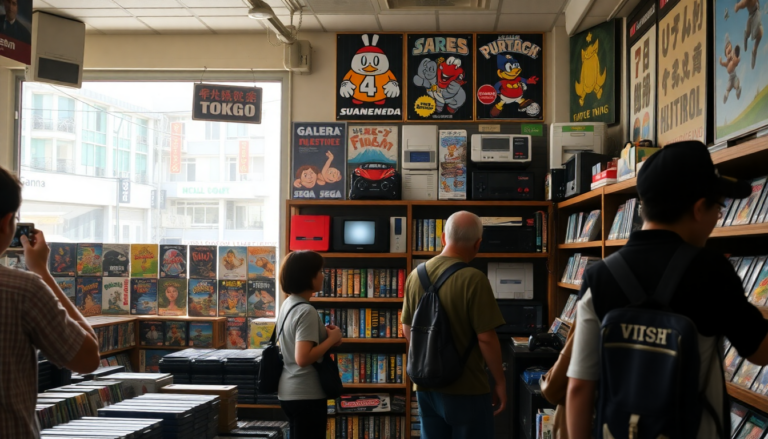Argomenti trattati
As we hit the halfway mark of 2025, it’s the perfect time to take a fresh look at the state of retro gaming in Japan. Over the last six months, we’ve seen various factors shaping this beloved hobby and market, particularly with a surge of interest from tourists and collectors alike. This article will guide you through the exciting and ever-evolving landscape of retro gaming across Japan.
The Impact of Tourism on Retro Gaming
The retro gaming scene in Japan has always been a hidden gem for enthusiasts. However, recent years have brought about a noticeable change due to international visitors. At first glance, it seemed like the retro boom had overlooked Japan, but the influx of tourists on the hunt for affordable gaming memorabilia has turned the tables. As these visitors flock to iconic destinations like Akihabara, we’ve witnessed a sharp increase in demand, tightening inventory across the board.
Have you noticed how prices for retro games have skyrocketed? Many have doubled or even tripled as tourists eager to make the most of favorable exchange rates jump into the market. This trend raises an intriguing question: is this phenomenon limited to bustling urban centers like Tokyo, or is it echoing throughout the rest of Japan?
During my personal exploration of nearly 100 stores across five prefectures since 2021, I’ve seen a significant shift in both inventory and pricing. The variety of retro gaming products available has become more limited, and stores are increasingly willing to accept lower-quality items just to keep their shelves stocked. Unfortunately, this shift prioritizes quantity over quality, leading to an overall decline in product standards.
Analyzing Key Systems and Trends
Now, let’s dive into specific gaming systems and how they’re faring in today’s retro market:
Nintendo Systems
The Famicom (NES) remains fairly stable, with a solid supply and consistent prices. It’s less attractive to tourists, primarily drawing in local collectors, which helps keep prices manageable.
On the other hand, the Super Famicom (SNES) has seen a sharp increase in prices, especially for boxed games from popular franchises like Final Fantasy. These items have become must-have souvenirs for tourists, significantly driving up their value.
Meanwhile, Gameboy and Gameboy Color systems are becoming more prominent in stores, likely due to the rising prices that foreign buyers are willing to pay. However, this also means that snagging a good deal is getting increasingly tricky.
For the Nintendo 64, prices remain relatively stable but are on the rise for popular titles. The Gameboy Advance consoles are also gaining traction, with prices hitting new heights as collectors chase after these nostalgic devices.
As for Gamecube games, particularly sought-after titles are becoming harder to find, with a limited selection appearing in stores. The Nintendo DS market is gradually normalizing, though some classic titles are starting to see price increases fueled by nostalgia.
Lastly, the Nintendo Wii and Wii U systems have not experienced significant price changes. Wii products remain incredibly affordable, making them an excellent entry point for new retro gamers. Conversely, the Wii U continues to lag in demand, but that could shift as nostalgia grows.
Future Outlook and Conclusion
While the Nintendo segment shows a gradual upward trend, stay tuned for future updates where I will delve deeper into the Sony systems and games. It’s crucial for both international collectors and locals eager to explore retro gaming to stay updated on these shifting market dynamics.
In summary, the landscape of retro gaming in Japan is characterized by rising prices and changing availability, largely driven by tourism. As we move further into the year, the market is likely to keep evolving. Staying informed about these trends will empower collectors to make savvy choices.
So, keep an eye out for updates and in-depth analyses on other gaming platforms as I continue my exploration of the vibrant retro gaming world.

